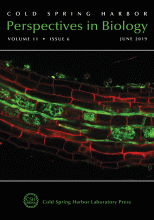The mutually beneficial arbuscular mycorrhizal (AM) symbiosis is the most widespread association between roots of terrestrial plants and fungi of the Glomeromycota. The association receives increasing scientific attention because of the nutritional benefit it confers to plants, its ubiquitous occurrence among contemporary plant species and, as a result of its evolutionary antiquity, an ancestral relationship to other plant interactions.
Our research focuses on molecular mechanisms underlying the formation and functioning of AM symbioses in rice and maize. It aims at developing knowledge to optimize the incorporation of the AM-symbiosis into sustainable yet modern agricultural practices. Projects include:
Rhizosphere communication
Establishment of AM symbioses relies on the continuous orchestration of signals to achieve recognition and coordination of the interacting organisms. We have identified genetic determinants of the rhizosphere dialogue from rice and maize. Their functional characterization will shed light on the communicative signal exchange, “sending” and “receiving”, that impacts on the plant’s reprogramming for symbiosis and therefore on the effectiveness of AM symbioses in rice and other cropping systems.
Symbiotic phosphate acquisition
Phosphate (Pi) acquisition of crops via AM symbioses gains increasing importance due to limited Pi reserves and demand for environmentally sustainable agriculture. We found that 70% of the Pi acquired by aerobically- grown rice is delivered via the symbiotic route. We would like to understand the functioning and regulation of this pathway under laboratory and field conditions to exploit the symbiosis and develop rice cultivars better adapted to low-input rice agro-ecosystem.
Arbuscules, the heart of the symbiosis

'Arbuscules' are immensely fascinating fungal feeding structures, produced inside root cortex cells by arbuscular mycorrhizal fungi. Arbuscules are built by consecutive dichotomous hyphal branching, ultimately adopting a complex tree-like shape at microscopic scale. As the arbuscule develops, the hosting plant cell undergoes fundamental architectural adaptations to accommodate the intracellularly expanding fungus. For instance, the plant cell dramatically increases membrane biogenesis to envelope the growing hyphal structure in the so-called peri-arbuscular membrane. The hugely enlarged membrane surface area between the two organisms appears ideal for the exchange of signals and nutrients. Remarkably, despite what seems a considerable metabolic investment, arbuscules collapse after a few days, and host cell architecture is restored to that of a non-colonized cell. Therefore, the life of an arbuscule is marked by the highly dynamic continuum of development and collapse without static intermediate stages. To capture arbuscule formation and turnover in 4D, and at ultrastructural resolution, we combined advanced multiphoton confocal imaging of living mycorrhizal rice roots with high resolution electron microscopy.
 'Arbuscules' are immensely fascinating fungal feeding structures, produced inside root cortex cells by arbuscular mycorrhizal fungi. Arbuscules are built by consecutive dichotomous hyphal branching, ultimately adopting a complex tree-like shape at microscopic scale. As the arbuscule develops, the hosting plant cell undergoes fundamental architectural adaptations to accommodate the intracellularly expanding fungus. For instance, the plant cell dramatically increases membrane biogenesis to envelope the growing hyphal structure in the so-called peri-arbuscular membrane. The hugely enlarged membrane surface area between the two organisms appears ideal for the exchange of signals and nutrients. Remarkably, despite what seems a considerable metabolic investment, arbuscules collapse after a few days, and host cell architecture is restored to that of a non-colonized cell. Therefore, the life of an arbuscule is marked by the highly dynamic continuum of development and collapse without static intermediate stages. To capture arbuscule formation and turnover in 4D, and at ultrastructural resolution, we combined advanced multiphoton confocal imaging of living mycorrhizal rice roots with high resolution electron microscopy.
'Arbuscules' are immensely fascinating fungal feeding structures, produced inside root cortex cells by arbuscular mycorrhizal fungi. Arbuscules are built by consecutive dichotomous hyphal branching, ultimately adopting a complex tree-like shape at microscopic scale. As the arbuscule develops, the hosting plant cell undergoes fundamental architectural adaptations to accommodate the intracellularly expanding fungus. For instance, the plant cell dramatically increases membrane biogenesis to envelope the growing hyphal structure in the so-called peri-arbuscular membrane. The hugely enlarged membrane surface area between the two organisms appears ideal for the exchange of signals and nutrients. Remarkably, despite what seems a considerable metabolic investment, arbuscules collapse after a few days, and host cell architecture is restored to that of a non-colonized cell. Therefore, the life of an arbuscule is marked by the highly dynamic continuum of development and collapse without static intermediate stages. To capture arbuscule formation and turnover in 4D, and at ultrastructural resolution, we combined advanced multiphoton confocal imaging of living mycorrhizal rice roots with high resolution electron microscopy.




